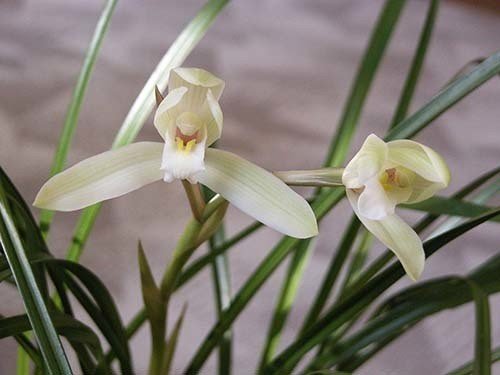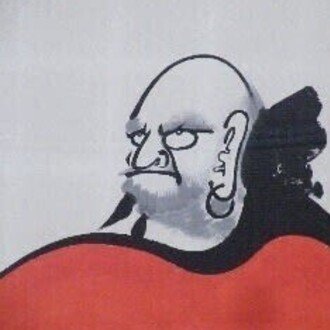
紀元前の「蘭」物語【一茶庵 稽古追想】 The "orchid" story of BC.
中国では花を君子と呼ぶことがある。昔から四君子と呼ばれる花がある。「蘭」「菊」「梅」「竹」。この4つの花を文人・詩人に例えて表現する場合もある。
蘭は「屈原(くつげん)」、菊は「陶淵明(とうえんめい)」、梅は「林和靖(りんわせい)」、竹は「蘇東坡(そとうば)」と言われている。それぞれ中国の歴史上有名な詩人である。
In China, flowers are sometimes called prince. There is a flower called Four Princes from ancient times. "Orchid" "Chrysanthemum" "Plum" "Bamboo". In some cases, these four flowers are likened to a literary person or a poet.
Orchids are said to be "Qu Yuan," chrysanthemums are said to be "Tao Yuanming," plums are said to be "Rinsei," and bamboos are said to be "Sotoba." Each is a famous poet in Chinese history.
その中で、煎茶稽古のお題は、お軸にあるように蘭について。それは、つまり紀元前の戦国時代の楚の政治家で詩人の「屈原」の話につながる。
Among them, the theme of Sencha practice is about orchids as you can see on the axis. That leads to the story of Chu's politician and poet "Qu Yuan" during the Warring States period in BC.
屈原といえば「離騒(りそう)」が代表作である。この詩は、中国の戦国時代の楚地方で謡われ「楚辞(そじ)」という様式を代表する有名な詩である。南方の「楚辞」に対して北方は「詩経(しきょう)」といわれ、共に中国の後代の漢詩の源流になったとされるものである。
Speaking of Qu Yuan, "Li Sao" is a masterpiece. This poem is a famous poem sung in the Chu region during the Warring States period in China and represents the style of "Chu Ci". The northern part is called "Shikyo" as opposed to the southern part "Chu Ci", both of which are said to have become the origin of Chinese poetry in the later generations of China.
楚辞の代表的な長編詩である離騒では、屈原がありもしない事をねじ曲げられて追放され、失意のあまり投身を決意するまでの心境を夢幻的に謡った詩である。その一節に下記のくだりがある。
In Li Sao, which is a typical feature-length poem of Chu Ci, it is a poem that dreamily sings the feelings of Qu Yuan until he was disappointed and decided to throw himself. The passage is as follows.
朝飮木蘭之墜露兮 夕餐秋菊之落英。
苟余情其信以練要兮 長頷亦何傷。
「朝に木蘭から落ちる露を飲み、夕べには香しい秋菊の花びらを食事としてとる」という訳になる。「私は、ただ主上と国の為に仕えて来たし、ただ国を守りたいがために身も心も高潔に修養を積んだのにどうして分かってくれないのか」という心情を表した意味である。
The translation is "drink the dew that falls from the tree orchid in the morning, and eat the fragrant autumn chrysanthemum petals in the evening." In the sense of expressing the feeling that "I have only served for the Lord and the country, and I have trained noblely both physically and mentally just because I want to protect the country, but why do people not understand?" is there.

東洋蘭 / Asian Orchid 蘭ネット画像から転載
屈原は、心情を表現する場合「蘭」や「菊」等の花で描写することがよくある。とくに「蘭」は精神性の高い高貴な花として頻繁に詩に登場している。紀元前の話がいまも脈々とつながっている。
いまも蘭がお祝いなどに贈られ花としては多い。屈原のこの「離騒」からの名残であろう。
Qu Yuan is often described by flowers such as "orchids" and "chrysanthemums" when expressing emotions. In particular, "Orchid" frequently appears in poetry as a noble flower with a high spirituality. The story of BC is still connected.
Even now, orchids are often given as flowers for celebrations. It is probably a remnant of this "li sao" in Qu Yuan.
レポート & 写真 / 渡邉雄二 お軸は文人会一茶庵所蔵
Reported & Photos by Yuji Watanabe Ojiku by Issa-an
いいなと思ったら応援しよう!

